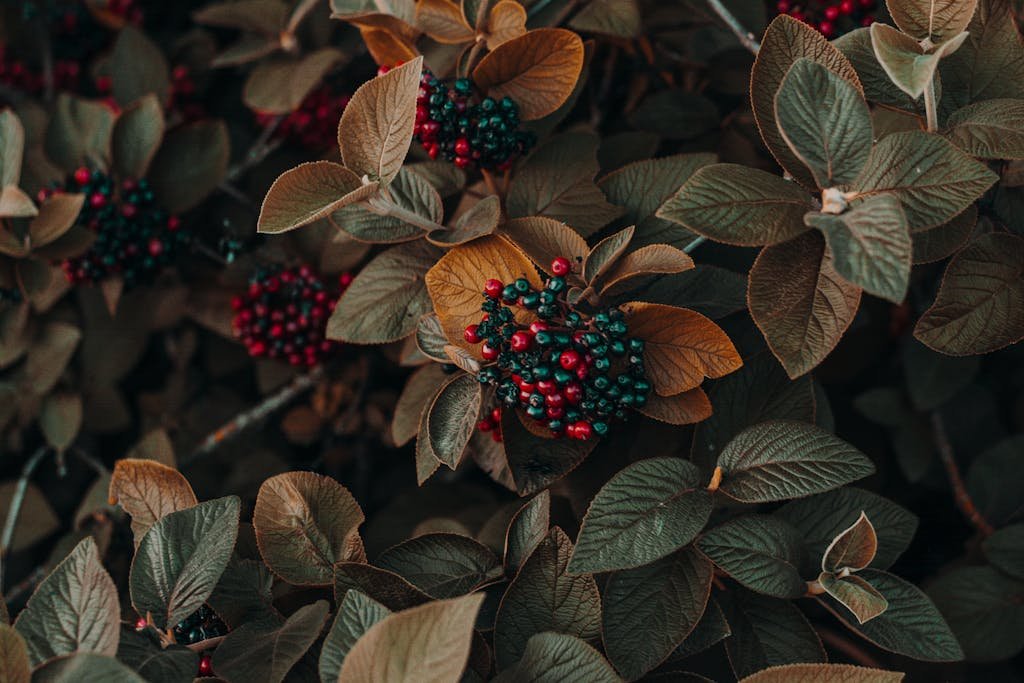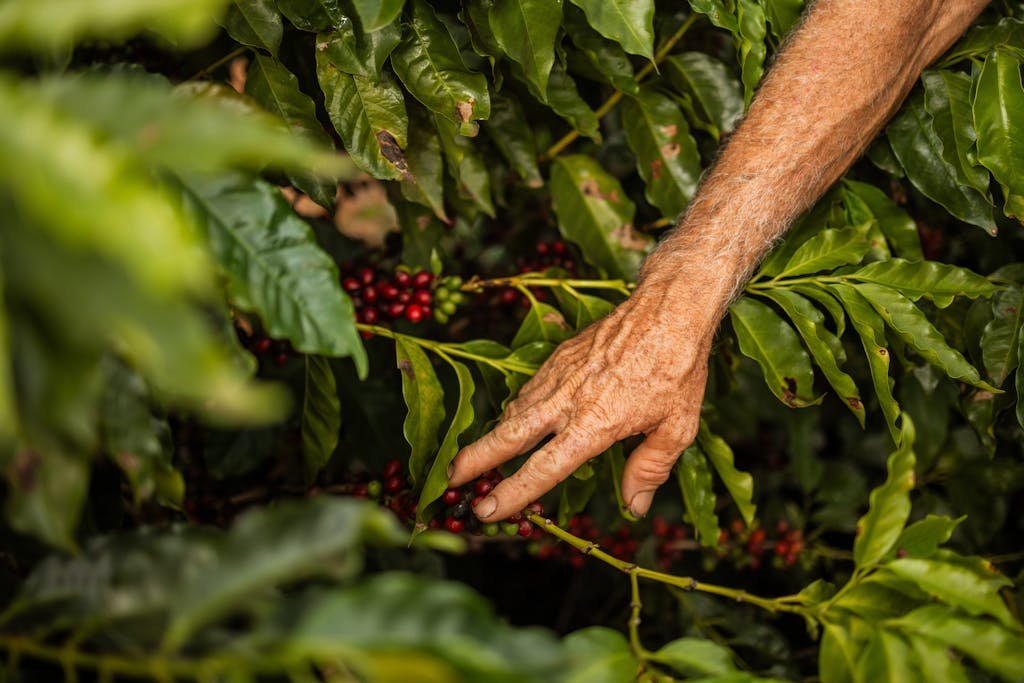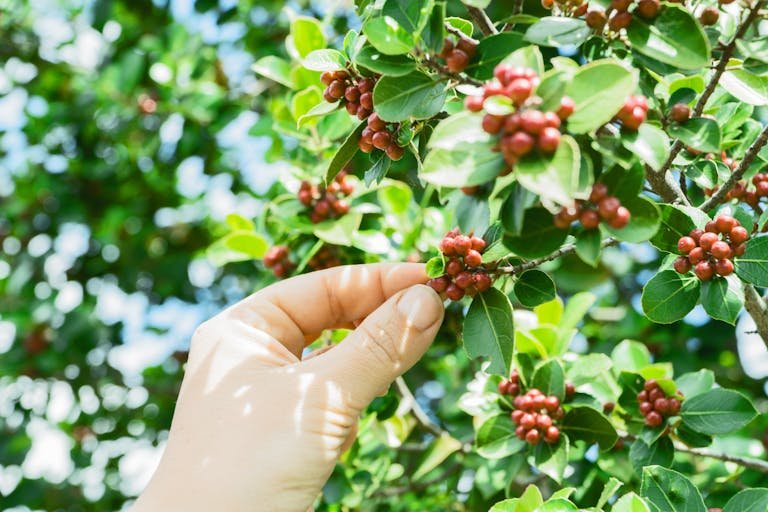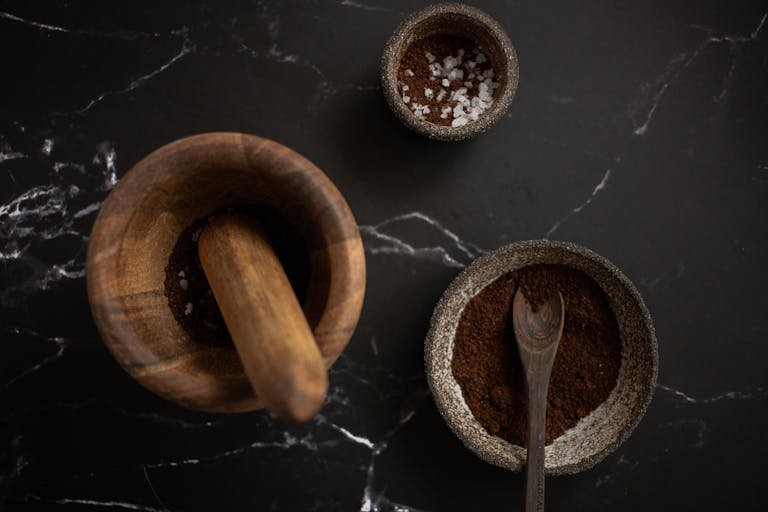Cultivating coffee plants at home is a rewarding journey, blending the satisfaction of growing your own beans with the allure of a lush, green space. With a mix of the right techniques, optimal conditions, and a bit of patience, you can create a “coffee bean paradise” right at home. This guide covers everything from selecting the right coffee bean varieties to designing a coffee garden and processing your beans for the perfect cup.
Choosing Coffee Bean Varieties for Home Growers
Selecting the right coffee bean variety influences growth success and the flavor of your coffee. While Arabica beans are popular, other varieties offer unique characteristics that can enhance your coffee-growing experience.
- Arabica (Coffea Arabica): Known for its smooth, mild flavor, Arabica is a favorite among coffee enthusiasts. It grows well in shade but requires specific temperature and humidity levels. Arabica plants are sensitive to pests and need careful attention.
- Robusta (Coffea Canephora): Robusta beans produce a stronger, bolder flavor, with higher caffeine content than Arabica. The plant is hardier, more resistant to pests, and can grow in a wider range of conditions, making it a good choice for beginners.
- Liberica (Coffea Liberica): A rare variety with a distinct, fruity aroma. Liberica beans have a floral taste profile and grow well in warm, humid conditions. They require the same basic care as Arabica but have a unique leaf shape and can be an attractive addition to any garden.
- Excelsa: Known for its fruity and tart flavor, Excelsa thrives in warm, humid climates and has a lower caffeine content. It’s a variety best suited for experienced growers looking to diversify their coffee flavors.
Each variety has different care requirements and flavor profiles. Choose the one that best matches your growing conditions and taste preferences to enhance your coffee-growing journey.
Setting Up Your Coffee Garden Oasis

A well-designed coffee garden balances aesthetics with the practical needs of coffee plants. Here’s how to create an inviting coffee oasis:
- Choose the Right Spot: Coffee plants need indirect sunlight and warm, humid conditions. Whether grown indoors or outdoors, they thrive in partial shade. If planting outdoors, consider placing your coffee plants under taller plants or trees that provide natural shade.
- Companion Planting: Incorporate plants like basil, ginger, or lemongrass, which deter pests and support coffee plants by attracting beneficial insects. Companion plants also enrich the garden’s biodiversity and add unique visual elements.
- Vertical Gardening Techniques: For limited spaces, consider vertical planting techniques. Hanging pots or using tiered shelving for small coffee plants can save space while giving each plant the light it needs. Vertical arrangements also create a layered, lush look in your garden.
- Adding a Coffee Garden Theme: Create a coffee-themed space by integrating coffee plant-inspired decor, such as bean-patterned planters or coffee-brown mulch. This makes the garden functional and reflects your passion for coffee.
By combining functionality with design, you can create a coffee garden that’s not only productive but also an enjoyable, relaxing space.
Starting Your Coffee Plants from Seeds or Seedlings
Starting with seeds or seedlings influences your plant’s growth time and requires specific techniques.
- Starting with Seeds: If you choose seeds, soak them in water for 24 hours to improve germination. After soaking, plant them in a well-draining soil mix and cover them with plastic to retain moisture. Place the pot in a warm, humid area with indirect sunlight. Germination can take up to two months, so patience is key.
- Using Seedlings: Seedlings are faster to establish and easier to care for initially. Choose healthy seedlings with no visible damage or yellowing leaves. Transplant them to pots or garden soil, ensuring adequate drainage and avoiding direct sunlight initially.
- Optimal Growing Conditions: Coffee plants need well-drained soil with a slightly acidic pH of 6-6.5. Maintain a consistent temperature between 60-80°F, mist regularly to increase humidity, and ensure they get about six hours of indirect sunlight each day.
Following these steps will set your coffee plants on the right path for healthy growth.
Daily Coffee Plant Care Tips for Healthy Growth
Coffee plants require consistent care for optimal growth, especially regarding water, light, and temperature. Here are essential daily care tips:
- Watering Requirements: Coffee plants need consistent moisture, but avoid waterlogged soil. Water every 2-3 days or when the top inch of soil is dry. Excess water can cause root rot, so ensure the soil drains well.
- Light Needs: Place your coffee plant in a location with bright, indirect light. If indoors, a spot near a north-facing window works well. If outdoors, provide dappled shade by placing the plant under a larger tree or in a shaded garden area.
- Humidity Levels: Coffee plants are tropical and need a humid environment. Mist the leaves daily, or place the pot on a tray of water-filled pebbles. Indoors, you can also use a humidifier to keep humidity levels high.
- Fertilizing: Feed your coffee plants with a balanced fertilizer every 2-3 months. Use one with a high nitrogen content to promote foliage growth. Organic fertilizers like compost or fish emulsion are also beneficial.
By following these care tips, you ensure your coffee plants grow strong, healthy, and productive.
Common Coffee Plant Problems

Coffee plants can face several common issues, especially when grown indoors or in new climates. Here’s how to identify and address them:
- Yellowing Leaves: Yellow leaves often indicate a lack of nitrogen or poor drainage. Apply a nitrogen-rich fertilizer and check that the soil is well-drained to resolve this issue.
- Leaf Drop: Sudden leaf drop may be due to temperature stress or underwatering. Maintain stable temperatures, avoid drafts, and water regularly.
- Pest Infestations: Coffee plants attract pests like aphids, mites, and mealybugs. Control pests by spraying neem oil or using insecticidal soap. Regularly inspect leaves to catch infestations early.
- Slow Growth: If your coffee plant grows slowly, it may not be getting enough light or nutrients. Increase indirect sunlight exposure and consider repotting with fresh soil and fertilizer.
These troubleshooting tips help ensure your coffee plants remain healthy and resilient.
Read Also: Flat White: A Creamy, Rich Coffee Delight
Understanding the Science Behind Coffee Growing
Growing coffee involves understanding soil, nutrients, and basic plant biology. Here’s a look at some key scientific aspects:
- Soil Composition and pH: Coffee plants require slightly acidic soil with a pH of 6-6.5. Soil rich in organic matter, like compost, promotes better growth by retaining nutrients and moisture. Regularly check soil pH and adjust with pH-specific fertilizers if necessary.
- Nutrient Requirements: Coffee plants need nitrogen, potassium, and phosphorous for strong growth. Nitrogen supports leaf growth, while potassium and phosphorous aid in flowering and fruit development. Use a balanced fertilizer to meet these nutrient needs.
- Photosynthesis and Light: Coffee plants rely on indirect sunlight for photosynthesis. Too much direct sunlight can damage the leaves, while too little light slows growth. Finding the right light balance is essential.
- Temperature and Humidity: Coffee grows best at temperatures between 60-80°F and high humidity levels. If temperatures drop below 50°F, growth slows and the plant may go dormant.
Understanding these factors helps you create the ideal growing environment for your coffee plants.
Harvesting and Processing Coffee Beans

Harvesting and processing your coffee beans is a unique experience that affects your coffee’s flavor.
- Harvesting: Coffee plants start producing cherries after 3-4 years. Cherries ripen to a deep red color, which signals they’re ready for harvest. Pick ripe cherries for the best flavor.
- Processing Methods:
- Washed Process: Remove the pulp, ferment the beans in water, and dry them. This method creates a clean, bright flavor.
- Natural Process: Dry the cherries with pulp intact, resulting in a fruity, wine-like flavor.
- Honey Process: Remove only the skin, leaving the mucilage on during drying. This method combines fruity and clean notes.
Each process requires sun drying the beans for several days. Home drying can be done on a clean surface under direct sunlight or using a food dehydrator for even drying.
Sustainable Coffee Growing Practices
Growing coffee sustainably is beneficial for both your garden and the environment. Implement these practices for an eco-friendly coffee paradise:
- Organic Fertilizers: Use compost, coffee grounds, or fish emulsion to fertilize your plants naturally. Organic fertilizers reduce chemical runoff and improve soil health.
- Water Conservation: Coffee plants require a lot of water. Reduce water usage with drip irrigation, which conserves water by delivering it directly to the roots.
- Reduce Waste: Recycle coffee grounds as mulch or compost, adding valuable nutrients back into the soil. Avoid single-use plastic pots and opt for biodegradable options.
These methods support sustainable gardening practices while ensuring your coffee plants thrive.
The Art of Home Coffee Roasting
Roasting coffee beans at home creates fresh, flavorful coffee customized to your taste. Here’s how to get started:
- Choose Your Equipment: Use a home coffee roaster, skillet, or popcorn popper to roast beans. Each option has pros and cons, so select based on your experience and desired control over the roast.
- Select Your Roast Level:
- Light Roast: Retains acidity and fruity flavors, ideal for Arabica beans.
- Medium Roast: Balances acidity with a more robust flavor.
- Dark Roast: Removes acidity, yielding a bold, rich taste.
- Roasting Process: Heat beans and stir continuously to prevent burning. When beans reach the desired color, cool them immediately to stop roasting. This preserves the flavor profile you’ve chosen.
With some practice, you’ll be able to fine-tune roasting techniques to bring out the best flavors in your coffee beans.
Pairing Coffee with Food and Beverages

Enhancing the flavor of homegrown coffee with complementary food pairings can elevate your coffee experience.
- Dark Chocolate and Arabica: The bitterness of dark chocolate enhances the fruity notes of Arabica.
- Savory Foods with Robusta: Pairing robusta with savory foods like aged cheese or charcuterie balances its strong flavor.
- Coffee Cocktails: Mix espresso with vanilla vodka or hazelnut liqueur for a creative coffee-based cocktail.
Pairing coffee with the right foods or cocktails adds layers of flavor, creating a rich, memorable tasting experience.
Read Also: Elevate Your Latte: Find the Perfect Milk
Final Note
Creating a coffee bean paradise at home is a deeply fulfilling journey. As you tend to your plants, select your ideal varieties, and experiment with processing and roasting, you’ll build a connection to the coffee-growing process that most coffee lovers only dream of. The care you invest—from the choice of coffee bean varieties to mastering the roast level—transforms each cup you brew into a testament to your dedication and patience.
Your coffee-growing journey can become a personal sanctuary, a sustainable oasis, and a culinary experiment all at once. Whether you’re motivated by the lush, tropical greenery, the satisfaction of homegrown beans, or the sensory experience of fresh, unique flavors, growing coffee is both an art and a science that offers immense rewards. So, plant your seeds, tend to your garden, and sip the results of your labor—your coffee paradise awaits.






